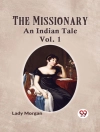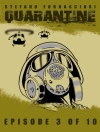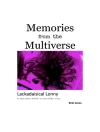It wasn’t easy to forget the frightened hostility in her face and the shrill hysteria of her voice when she’d closed and bolted the door.
Who were the intruders who left bloodstains and a sapphire brooch in Paul Farrell’s flat? And, since nothing was taken, why should that flat be burgled at all? That problem was only the beginning. What, for instance, had become of Farrell’s wife? And of the girl adopted by the vicar’s sister? And why should that sister plant bulbs on a stranger’s grave? And why should a Soho head-waiter, doing pretty well for himself, suddenly commit suicide?
These were only some of the problems confronting Ludovic Travers and his old friends, Matthews and Jewle of Scotland Yard. A tangle, indeed, of intrigue, blackmail and murder that seemed unsolvable: and yet, when finally resolved, makes the reader wonder why he had not found the answers long before. This is vintage Christopher Bush.
The Case of the Sapphire Brooch was originally published in 1960. This new edition features an introduction by crime fiction historian Curtis Evans.
’Freshness both of plot and writing.’ Anthony Berkeley
’Travers continues to be a wholly satisfying creation.’ Alan Hunter
O autorze
Christopher Bush was born Charlie Christmas Bush in Norfolk in 1885. His father was a farm labourer and his mother a milliner. In the early years of his childhood he lived with his aunt and uncle in London before returning to Norfolk aged seven, later winning a scholarship to Thetford Grammar School.As an adult, Bush worked as a schoolmaster for 27 years, pausing only to fight in World War One, until retiring aged 46 in 1931 to be a full-time novelist. His first novel featuring the eccentric Ludovic Travers was published in 1926, and was followed by 62 additional Travers mysteries. These are all to be republished by Dean Street Press.Christopher Bush fought again in World War Two, and was elected a member of the prestigious Detection Club. He died in 1973.












